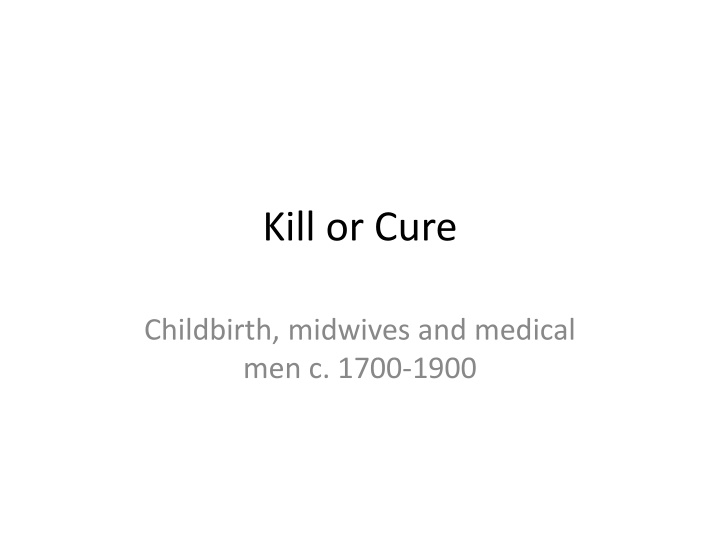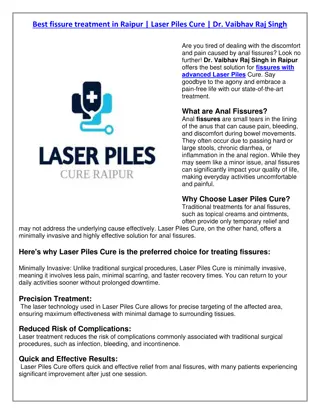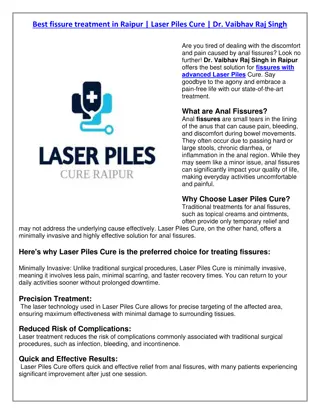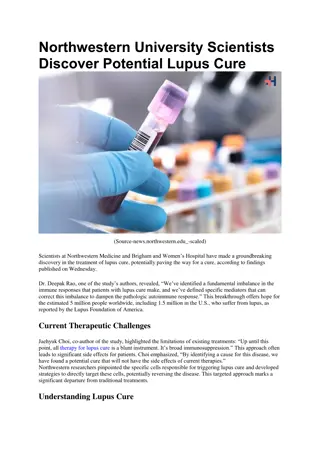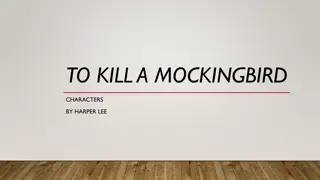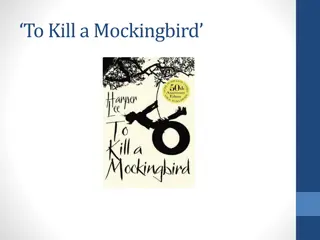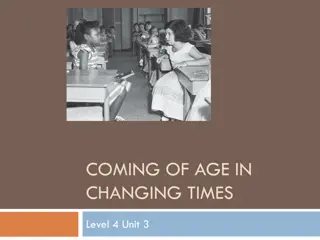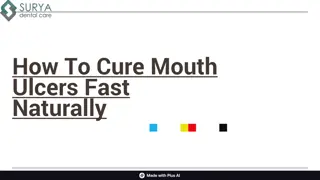Kill or Cure
Delve into the historical evolution of childbirth practices from the 18th to the 19th century, exploring the roles of midwives and medical professionals. Gain insight into the significant changes, challenges, and advancements that shaped maternal healthcare during this period, offering a fascinating glimpse into the past.
Download Presentation

Please find below an Image/Link to download the presentation.
The content on the website is provided AS IS for your information and personal use only. It may not be sold, licensed, or shared on other websites without obtaining consent from the author.If you encounter any issues during the download, it is possible that the publisher has removed the file from their server.
You are allowed to download the files provided on this website for personal or commercial use, subject to the condition that they are used lawfully. All files are the property of their respective owners.
The content on the website is provided AS IS for your information and personal use only. It may not be sold, licensed, or shared on other websites without obtaining consent from the author.
E N D
Presentation Transcript
Kill or Cure Childbirth, midwives and medical men c. 1700-1900
Aims To introduce ideas about maternity and social and medical models of childbirth. To set the context by looking at the experience of maternity before 1700. To explore changes in maternity care in the period 1700-1800 and the conflicts between midwives and men-midwives. To chart the regulation of midwifery. To consider the risks of mortality in childbirth and the rise of lying-in hospitals.
Part one Maternity care pre-1700
Traditional ideas of birth Traditionally pregnancy and childbirth were viewed as natural life events. Unless things went wrong, they did not need medical intervention. Pregnant women were not patients. Feminists have accused the medical profession of taking over childbirth: doctors wanted to control women and to take the credit for safely delivering their babies. Ann Oakley argues: It is only by an ideological transformation of the natural to the cultural that doctors can legitimate reproduction as a medical speciality. From what we know of maternity in the Middle Ages and the Renaissance, women figured prominently in the care of women during pregnancy and birth.
Middle Ages and Renaissance 1 Birthing Chair: Woodcut from Der Swangern Frawen und he bammen roszgarten, by Eucharius R sslin, 1513. (Arons, 1994) Childbirth: Woodcut from Der Swangern Frawen und he bammen roszgarten, by Eucharius R sslin, 1513. (Arons, 1994)
Middle Ages and Renaissance 2 In England the midwife s duties were incorporated into the oath she swore under the licensing system operated through the Church under an Act of 1512. Midwives were forbidden from helping with contraception, abortion, child destruction or concealment of birth. They had to take weakly infants to the priest for baptism, or perform the ceremony themselves. If the mother died undelivered, the midwife had to cut the child out while it lived and christen it. As the 16th C progressed the Renaissance spirit of enquiry was applied by leading surgeons to the anatomy of childbirth. Eminent among these pioneers was Ambroise Par . His fame encouraged male attendance in childbirth, first in extraordinary cases and later in routine ones. There were new designations ( Man-midwife in English, accoucheur in French), for men who added midwifery to their practice. Church licensing, which had given the sworn midwife her official standing, was gradually discontinued. Ambroise Par .jpg Ambroise Par (1510-1590)
Part two Midwives and medical men 1700-1800
Sarah Stone Practised in Taunton, Somerset. Extensive practice with about 300 cases a year. Apprenticed to her mother for 6 years. Attended lectures on anatomy and watched dissections. She became a consultant and was called in by other midwives in difficult cases. Wrote A Compleat Practice of Midwifery (1737).
Rise of the man-midwife 1 Fashion and forceps (Chamberlen forceps 1673) science enters birthing room, though often crude science, social kudos of employing accoucheur. Midwifery courses for male pupils experience replaced by theoretical book learning. Lying-in hospitals trained doctors and midwives. Famous man-midwives e.g. William Smellie, William Hunter.
Rise of the man-midwife 2 http://upload.wikimedia.org/wikipedia/commons/thumb/3/3a/Smellie_forceps.jpg/300px-Smellie_forceps.jpg The reasons why men-midwives succeeded in persuading the public of the value of their skill are still the subject of keen historical debate. Irvine Loudon argues it was due firstly, to a new spirit of medical enquiry, especially in the fields of anatomy and physiology. And secondly, the sudden rise of the surgeon- apothecary as the family doctor. The term medicalisation has been used to denote the process by which childbirth was made subject to the power and authority of doctors. However Ornella Moscucci argues that the 18th C men-midwives onslaught on the female ceremony of childbirth must be read as an attempt to substitute women s customs for new medical rites. Drawing of childbirth with use of forceps by William Smellie.
Lying-in hospitals C18th = rise of lying-in hospitals offered training to midwives and man-midwives. Run as charities poor women had limited access to care, concerns about population. Many in London. City of London Lying-in Hospital
Part three The regulation of midwifery
Training Up until the late C19th there was no formal training or qualification in midwifery (in Britain, cf. the continent where midwifery training and schools were set up and midwives licensed by towns). Some midwives were trained by apprenticeship. More often skills was passed down from mother to daughter or other female relative. Most training was practical, hands on honed by practice and experience. A few had more theoretical knowledge. Thomas Rowlandson, Midwife on her way to a labour, 1811.
Midwives and medical men Before the 1902 Act there was no regulation, and no definition of what a midwife should be. Whilst it gave midwives independence and women choice it meant women risked using dangerous, unskilled midwives as well safe and experienced ones. The disciplines of obstetrics and gynaecology did not have long established traditions either. At the beginning of the 18th C, the employment of medical men in the conduct of normal as well as abnormal labourers was rare. By the end of the 18th C, many women of all social classes engaged a medical practitioner rather and virtually all surgeon-apothecaries were also men-midwives . This development was deeply resented by the midwives.
Regulation and registration 1840s midwifery added to the medical curriculum 1850s diplomas awarded by medical schools. Licence in Midwifery (LM) acquired by many general practitioners midwifery a foothold of general practice. 1862 King s College Hospital introduces midwifery training for nurses. Female Medical Society and Midwives Association campaigned for proper training programmes. 1902 Midwife Registration Act certification became a requirement. Managed largely by doctors. 1905 Select Committee established a register of midwives, with a central body to approve training schools and admit qualified candidates.
Part four Maternity and mortality
Death in childbirth Death in childbirth of mothers and babies. Childbirth could be lengthy and painful (impact of rickets, instrumental birth, childbirth fever). Maternal mortality from 1850-1900 c. 5 per 1000 births. Women made preparations for death while pregnant. Estimates of maternal mortality rates (MMR) from records of 13 English parishes in 50 year periods MMR per 1000 live births
Puerperal fever Ignaz Semmelweis (Vienna Maternity Hospital) thought puerperal fever was carried on the hands of medical students who did postmortem dissections. He showed that by washing hands with carbolic soap before attending women in labour cases could be greatly reduced. In 1858 he published The Aetiology of Childbed Fever. He was attacked widely by the establishment of obstetricians in Europe, who could not believe they were responsible for the enormous number of deaths. Louis Pasteur showed in 1879 that the streptococcus could be cultured from most cases of puerperal fever. This led to the search for antiseptics, chemicals which would kill bacteria. Joseph Lister introduced a carbolic spray into the operating room to keep the atmosphere above the wound free of bacteria. Antisepsis was joined by asepsis, the keeping of bacteria away from open wounds. An engraved portrait of Semmelweis: a mustachioed, balding man in formal attire, pictured from the chest up. Ignaz Semmelweis, 1818-1865.
http://upload.wikimedia.org/wikipedia/commons/thumb/c/c7/Edward_Rigby_Clover.jpg/220px-Edward_Rigby_Clover.jpghttp://upload.wikimedia.org/wikipedia/commons/thumb/c/c7/Edward_Rigby_Clover.jpg/220px-Edward_Rigby_Clover.jpg Bleeding Antepartum haemorrhage may be due to placenta praevia or to separation or abruption of the normally sited placenta. Postpartum haemorrhage can follow trauma at delivery, or more usually, because the uterus does not contract down after delivery. Treatment of excessive postpartum bleeding was attempted with vaginal packing, or with cold or hot vaginal douches, but the first effective treatment was with ergot, which caused uterine muscles to contract. Robert Lawson Tait 2.jpg Edward Rigby (1747-1821) http://upload.wikimedia.org/wikipedia/commons/thumb/8/89/John_Braxton_Hicks_1881.jpg/220px-John_Braxton_Hicks_1881.jpg Lawson Tait (1845-1899) John Braxton Hicks (1823-1897)
Toxaemia It was probably John Lever, a lecturer in obstetrics at Guy s Hospital, who first recognized the link between protinuria and fits. Its treatment was by sedation with drugs currently available, leading to the technique devised by Vasili Stroganoff in 1898 of controlling fitting by the use of sub-cutaneous morphia and chloroform. Magnesium sulphate was first used in America in the 1920s and soon spread there to both treat and prevent fitting, but was not picked up in Britain until some 60 years after its widespread use in the USA. The real management of eclampsia and pre- eclampsia followed its diagnosis and early treatment with hospitalization and bed rest in the 1920s. John Lever (1811-1859) Vasili Stroganoff (1857-1938)
Abortion Abortion seems to have become more organized than previously in the mid-19th C. It is likely that illegal abortion was common by the end of the 19th century. The most obvious sign of more widespread abortion was the appearance of a large number of thinly veiled abortion advertisements. For females of all ages these Pills are Invaluable, as a few a doses of them carry off all humours, and bring about all that is required. No female should be without them. There is no medicine to be found to equal BEECHAM'S PILLS for removing any obstruction or Irregularity of the system. If taken according to the directions given with each box, they will soon restore females of all ages to sound and robust health. A 19thC advertisement for Beecham s Pills.
Conclusions The practice and development of maternal care has centred on the questions: is there such a thing as a normal pregnancy and labour; where should the normal woman give birth; who should look after her; how much medical intervention should occur; and should attention focus on the mother or child. Implicit in discussions about maternal care is whether pregnancy and childbirth should be medical questions at all. The medicalisation thesis criticises doctors and downplays medical accomplishments, arguing the medicalisation of childbirth was part of the medical profession s method of controlling and exerting power over the population. But, in the words of Ann Oakley, There was no golden age in which women gave birth both safely and effortlessly.
